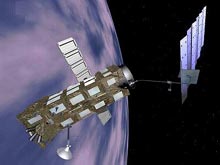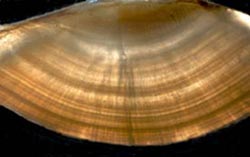
France launches in Valenciennes a 6,4 million euro research program on transport safety. It reinforces the international position of Nord-Pas de Calais and the University of Valenciennes.
The scientific council of the New Research Action “Safety in Transport Systems”, which came together at the University of Valenciennes and Hainaut-Cambrésis on the 31st of January 2002, has just validated and launched a program composed of 7 projects stretched out until 2006. 6,4 million euros will b

More effective vaccines will be developed as a result of research at the University of Dundee which is harnessing the skills of special cells in the body`s immune response process.
The Medical Research Council has awarded Professor Colin Watts and his colleagues £1.2 million to fund work on key cells in our immune system called dendritic cells. Colin is Professor of Immunology in the School of Life Sciences.
Although immunologists have known about dendritic cells for many years thei

During the night of 28 February/1 March, Envisat, ESA’s most powerful and sophisticated Earth observation satellite, will be launched by an Ariane 5 rocket from Europe’s spaceport in Kourou at 22:07 hrs Kourou time (02:07 hrs CET).
Built by a consortium of 50 companies led by Astrium, Envisat is the successor to ESA’s ERS satellites. With an array of ten instruments to monitor land, oceans, atmosphere and ice caps, it will provide the most complete set of observations ever achieved, to hel

“Nuclear fusion” is the melting of light nuclei into heavier ones, a process that according to the laws of physics releases enormous amounts of energy. For the past 50 years many scientists have sought ways of harnessing this fusion reaction under controlled reactor conditions as a safe, clean and practically inexhaustible source of energy. Siegbert Kuhn and his team at the Institute of Theoretical Physics at Innsbruck University are making a major contribution to these efforts and positioning Austri

The days of fast-fading cellular phone batteries may soon be over. Researchers at the Lawrence Livermore National Laboratory (LLNL) recently developed a working prototype for a portable fuel cell energy source that could power a cellular phone 300 percent longer than existing rechargeable batteries do. Indeed, the new technology would be less expensive, smaller and more powerful than any battery currently in use, according to Jeff Morse of LLNL’s Center for Microtechnology Engineering. He predic

Using tiny bone fragments from fossilized fish, scientists have traced the roots of the climate phenomenon known as El Niño, the intermittent warming of ocean waters off the coast of Peru that can affect weather worldwide. According to a report published in the current issue of the journal Science, modern El Niño conditions arose around 5,000 years ago.
Previous research based on fossilized mollusk remains had suggested that El Niño conditions did not exist thousands of years ago, but those

Scientists use high-energy heavy ion collisions as a new tool to reveal subtleties of nuclear structure with implications for many areas of physics. Scientists have demonstrated a new way to…

Part chemist, part physicist and 100% researcher, Niéli Daffé is interested in materials that change colour or magnetism when illuminated. She studies them using X-rays in her SNSF-supported research. From…

In case you’re scratching your head, we help break it down. Using muon spin rotation at the Swiss Muon Source SmS, researchers at PSI have discovered that a quantum phenomenon…

Stanford Medicine-led team uncovers potential therapy. ecDNA catapults into spotlight. A trio of research papers from Stanford Medicine researchers and their international collaborators transforms scientists’ understanding of how small DNA…

Experiments at GSI/FAIR determine properties of moscovium an. An international team led by scientists of GSI/FAIR in Darmstadt, Johannes Gutenberg University Mainz and the Helmholtz Institute Mainz, succeeded in determining…

A research group may have unraveled the mystery behind the locomotion of the ancient marine reptile, the plesiosaur, by recreating a bio-inspired control system that accounts for motion adjustment. Extinct…

… best quality at minimum cost thanks to precise stabilisation. Online characterisation, plastic formulations, more profitable. All organic substances, including plastics such as polypropylene (PP), undergo auto-oxidation in the presence…

Thermoplastic blends, produced by a new process, have better resilience. Now, experiments at the IRIS beamline show, why: nanocrystalline layers increase their performance. Bio-based thermoplastics are produced from renewable organic…

MXene nanomaterials enable wireless charging in textiles. Researchers demonstrate printed textile-based energy grid using MXene ink. The next step for fully integrated textile-based electronics to make their way from the…

Small satellites that find and collect space debris: Mohamed Khalil Ben-Larbi is working towards this goal. He is the new Professor of Space Informatics and Satellite Systems at the University…

ISTA researchers investigate why graph isomorphism algorithms seem to be so effective. Graphs are everywhere. In discrete mathematics, they are structures that show the connections between points, much like a…

Researchers are perfecting processes to grow high-quality diamond material reliably and efficiently. Researchers are developing new ideas about the best ways to make lab-grown diamonds while minimizing other forms of…